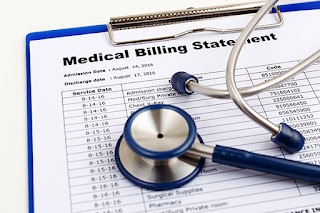Medical Billing 101: What You Need to Know
In the intricate ecosystem of
healthcare, medical billing forms the vital link between the medical billing services provided
by healthcare professionals and the payment processes of insurance companies
and patients. For healthcare providers, understanding the nuances of medical
billing is not just beneficial – it's indispensable. This comprehensive guide
aims to shed light on the essentials of medical billing, its challenges, and
the emerging trends shaping its future.
Introduction
to Medical Billing: The Crucial Link Between Healthcare and Finance
Medical billing is the process
through which healthcare providers submit and follow up on claims with health
insurance companies to receive payment for services rendered. This includes a
variety of tasks such as coding diagnoses, preparing invoices, and managing
patient billing inquiries. The efficiency and effectiveness of this process
directly impact the financial health of the healthcare providers.
Why
Understanding Medical Billing Is Essential for Healthcare Providers
For healthcare providers, mastering
medical billing is crucial for several reasons. It ensures the sustainability
of the practice by facilitating timely reimbursements. Additionally, accurate
billing practices are integral to maintaining compliance with evolving
healthcare regulations and avoiding potential legal issues.
The
Basics of Medical Billing: Key Terminology and Concepts
Understanding medical billing
requires familiarity with specific terminology and concepts. Some of the key
terms include:
- ICD Codes:
International Classification of Diseases codes used to describe diagnoses.
- CPT Codes:
Current Procedural Terminology codes that describe the medical services
and procedures performed.
- EHR Systems:
Electronic Health Records, digital versions of patients' paper charts,
play a critical role in modern medical billing.
Common
Challenges in Medical Billing and How to Overcome Them
Healthcare providers often face
challenges such as denied claims, coding errors, and delays in payment. These
issues can be mitigated by training staff in accurate coding practices,
utilizing updated billing software, and adopting a proactive approach to claim
submission and follow-up.
The
Evolving Landscape of Medical Billing: Current Trends and Technologies
The medical billing landscape is
constantly changing with the introduction of new technologies and regulations.
Some current trends include:
- Automation and AI:
Automated processes and artificial intelligence are being increasingly
adopted to enhance accuracy and efficiency.
- Telehealth:
The rise of telehealth services poses unique billing challenges and
opportunities that providers must address.
- Value-based Care:
This model, which focuses on patient outcomes, requires adjustments in
billing practices to align with its principles.
Best
Practices for Efficient and Accurate Medical Billing
Adopting best practices is essential
for streamlining the medical billing process. These include:
- Ensuring thorough documentation of services rendered.
- Staying updated on billing codes and healthcare
regulations.
- Implementing regular training sessions for staff
involved in medical billing.
The
Future of Medical Billing: Predictions and Opportunities
The future of medical billing is
likely to see increased digitization, further integration of AI, and a
continued shift towards value-based care. These changes present opportunities
for healthcare providers to refine their billing processes and improve their
operational efficiency.
Conclusion:
The Importance of Staying Informed and Adapting
In the fast-evolving field of
healthcare, staying informed about the latest developments in medical billing
is crucial for healthcare providers. By understanding the basics, addressing
common challenges, and adopting best practices, providers can ensure the
financial viability of their practices while focusing on delivering quality
patient care.
The landscape of medical billing is
complex but navigable, with ample resources and technologies at hand to support
healthcare providers in optimizing their billing processes. By staying informed
and adaptable, providers can not only withstand the challenges of today's
healthcare environment but also thrive in the face of future opportunities.



Comments
Post a Comment